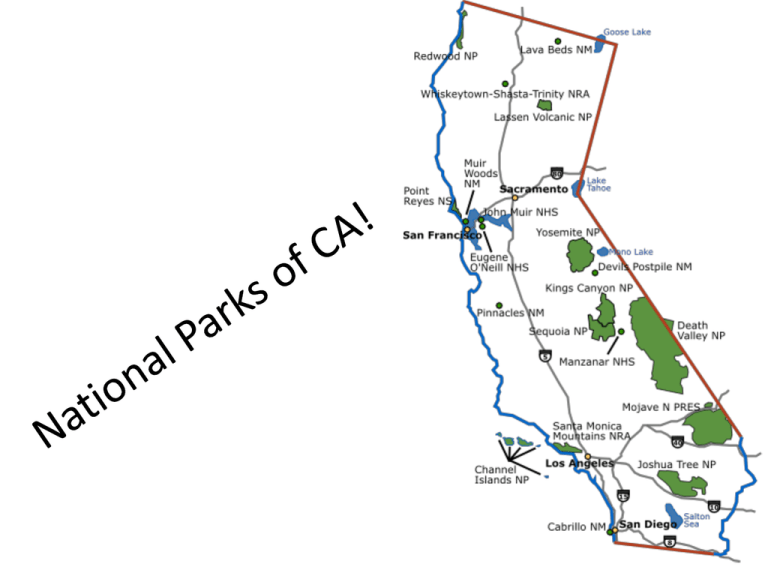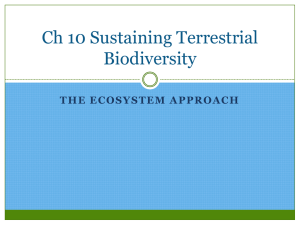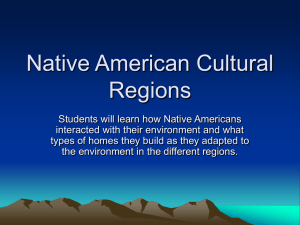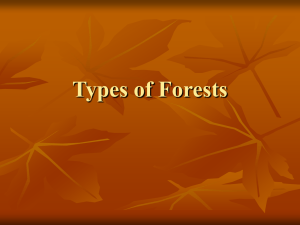Timber Harvest Techniques
advertisement

Check In 6. • Bureau of Land Management • Department of Defense • Fish and Wildlife Service • Forest Service • National Park Service Timber Harvest Techniques Harvesting forests Clear Cutting • Cut all of the trees in an area • Promotes tree ssp. that need lots of light • Creates even age stands • Monoculture—issues with that • Negative-erosion, runoff, habitat, ugly, recreation • Positive increase light needing trees, creates conditions like primary succession and early secondary succession • Slash and burn—cutting and burning forest to create agriculture fields Shelterwood • Leave some of the mature trees to protect any new trees • Creates mostly even-age stands • Negative-cost more than clear cutting • Positive-Mature trees keep growing, shelter young trees young trees—looks better Selective Cutting • Remove single of small number of trees • Manage soils, improve habitat, encourage species regeneration and species diversity • Costs much more; however looks very pretty and natural. • Negative – still need to create roads into forest, can fragment forest, diversity change, impact soil Ecological Sustainable Logging • Most eco-friendly, maintains all species. • Negative – difficult to compete with mechanized logging Harvesting forests Check in!!!!! 1. Which of the following is a commercially used method for harvesting trees and is most likely to lead to a fragmented landscape with serious impacts on biodiversity? A. selective cutting B. Clear cutting C. Shelter-wood cutting D. Slash and burn clearing E. gleaning 2. Ecosystem-based timber harvesting uses methods that ____ A. Are the most efficient in the short term B. Are very popular with timber companies C. Have the greatest impacts on forest ecosystems D. Leave seed-producing mature trees uncut to provide for future forests E. Are ecologically harmless 3. Second-growth forests can be described by all of the following except • a. result from primary succession. • b. provide less species diversity than old-growth forests. • c. often developed after abandonment of farms. d. may be tree farms. • e. are the predominant forest form in the United States. • 4. Which of the following is not an economic service provided by forests? • a. purification of water and air • c. lumber • e. jobs • b. fuelwood • d. mining 5. Old-growth forests can be described by all of the following except a. have not been disturbed for several hundred years. b. large numbers of snags and fallen logs. c. provide a variety of ecological niches. d. a clear forest floor. e. are the predominant forest form in the tropics. 6. Which of the following is not a result of deforestation? a. decreased soil fertility from erosion b. premature extinction of species with specialized niches c. runoff of eroded soil into aquatic systems d. reduction of flooding e. release of CO2 into the atmosphere 7. Forests remove ____ from and add ____ to the atmosphere. a. oxygen . . . carbon dioxide b. nitrogen . . . oxygen c. carbon dioxide . . . sulfur dioxide d. carbon dioxide . . . oxygen e. nitrogen . . . carbon dioxide 8. Selective cutting a. encourages crowding of trees. b. encourages growth of more mature trees. c. maintains an uneven-aged stand of trees of different species, ages, and sizes. d. requires a special seed-distribution plan. e. requires crop rotation. 9. The removal of all trees from a given area in a single cutting to establish a new even-aged stand is called a. selective cutting. b. seed-tree cutting. c. clear-cutting. d. shelterwood cutting. e. strip-cutting. 10. Clear-cutting on a large scale leads to a. erosion and water pollution. b. flooding. c. habitat fragmentation. d. loss of biodiversity. e. All of these answers. 1. Remove leaves and rubbish under doghouse and any other structures. 2. Stack firewood at least 100 feet away and uphill from the house. 3. Water and mow grass regularly to keep it green and less flammable. 4. Rake flammable vegetation such as dead leaves, limbs, branches, twigs, and grass clippings. 5. Have power company clear branches from lines. 6. Prune tree branches within 15 feet of a chimney outlet. 7. Clean chimneys at least once a year. 8. Make sure roof uses fire-resistant materials such as asphalt, fiberglass, concrete tile, clay tile, or metal. 9. Remove dead branches that extend over the rooftop. 10. Clean gutters regularly. 11. Remove vines from exterior walls. 12. Arrange trees so that there are gaps in the canopy. 13. Any part of property that includes wood, such as fence, latticework, or facing should be changed. Alternatives include a stone fence, brick or concrete as a porch front and, concrete or clay tiles on the house dormer. 14. Address should be clearly posted for firefighters to see. 15. Never leave a flame burning unattended. 1. The Bad 2. The Good 3. How to help forests restore themselves. Fire!!!! • Explain 4 ecological roles wildfires provide Ecological Role of Fire in Forest Ecosystems • • • • • 1. Reduces probability of catastrophic fire 2. Nutrient input into soils 3. Control of insect pests 4. Control of tree pathogens 5. Maintains species diversity • What are the problems with wildfires today…. Compared to its historical patterns? • Historically, wildfires occurred frequently and burned for a long time at a low intensity. • Today, wildfires start in areas where the amount of fuel is exceedingly high due to fragmented natural habitats, hazardous conditions created by increased fuel loads and encroaching human development (which can cause high intensity burns) • Land managers actively seek to use controlled or prescribed fire to achieve restoration goals • Controversy: • fire suppression removes the natural role fire plays in healthy forests, drought, logging that removes large, fire resistant trees," Managing with Fire • Good-get rid of underbrush and dead trees and this technique helps prevent out of control fires. • Natural • Increase diversity-opens up space and new organisms get in. • Decrease in population density of trees –Good! • Decrease insect problems • Negative • Can get out of control—looks bad • Can lead to damage of property and BIG COSTS 1. Fires kill all of the wildlife in the wetlands. T F 2. Some plants have adapted to survive and thrive with fire. T F 3. Prior to the settlement of North America, lightning caused most fires. T F 4. High-intensity fires are less ecologically destructive than lowintensity fires. T F 5. When fires occur regularly, the heat sterilizes the soil and kills most of the plants. T F 6. Fires can increase the diversity of the vegetative landscape and foster a mosaic of habitats. T F 7. Fire recycles nutrients. T F 1. Fires kill all of the wildlife in the wetlands. T F 2. Some plants have adapted to survive and thrive with fire. T F 3. Prior to the settlement of North America, lightning caused most fires. T F 4. High-intensity fires are less ecologically destructive than lowintensity fires. T F 5. When fires occur regularly, the heat sterilizes the soil and kills most of the plants. T F 6. Fires can increase the diversity of the vegetative landscape and foster a mosaic of habitats. T F 7. Fire recycles nutrients. T F Exit Card • 1. One concept you totally get. • 2. One concept you have a question on. • DON’T FORGET!!! – Thursday• Notes 271-277 • Study Guide 1-8









